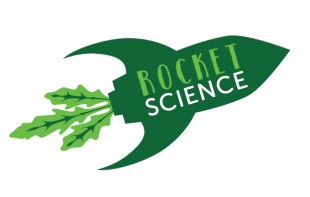We can't wait to exhibit at the RHS Chelsea Flower show next week and we want you to tell us which of the following plants you would take to space.
On Earth, 30 crops provide 95% of human food energy needs. Four of these (rice, wheat, maize and potato) are responsible for more than 60% of our energy intake. In our exhibit you will see ten food plants that scientists working on the MELiSSA closed life support system have identified for future research and food production in space. If they can be successfully grown astronaut dining will be changed forever.
Place your vote in the comments below or on our Facebook page.
 There will be more announcements about the Rocket Science programme next week during the show. We are working with the RHS Campaign for School Gardening to turn children into space biologists. Keep an eye on our website, Facebook, and Twitter for more information.
There will be more announcements about the Rocket Science programme next week during the show. We are working with the RHS Campaign for School Gardening to turn children into space biologists. Keep an eye on our website, Facebook, and Twitter for more information.
Here's your plants:
Potato
Potato tubers provide a good source of energy as they are rich in carbohydrates. In space, harvested tubers could be eaten or grown on to produce a new crop.
Wheat
Ideal choices to take would be soft white wheat and Durum (hard) wheat. Soft white wheat gives a high yield and is good for bread making. Durum wheat can be processed by removing the germ and bran to produce semolina grains which are high in protein and gluten and can be used to make pasta and couscous. These could form an essential part of the crew’s diet on longer term missions.
Spinach
Spinach is quick to grow and is high in minerals. It is easy to prepare and apart from its roots the whole plant can be eaten with minimal waste.
Lettuce
This salad crop, which includes Rocket, is fast growing, is easy to prepare and has many different varieties, textures and colours which are appetising to look at as well as being nice to eat.
Beetroot
With fifty years of plant research in space behind us, there is still more to learn. Scientists are interested in how roots and tubers behave in space, making beetroot an ideal choice for the top ten. The leaves and roots can be eaten and both have a high nutritional value.
Onion
Onions have an analeptic (stimulating) effect on the central nervous system and could help astronauts to remain alert. They enhance the taste and smell of many dishes and provide a good source of vitamins and minerals.
Rice
Many space missions rely on international collaboration. Rice is the main source of carbohydrate for many cultures from Asia to the Americas so would be an important reminder of home for astronaut crews.
Spirulina
Although not a true plant, this blue green micro-Algae found in the oceans has high protein content. It is also releases oxygen through very efficient photosynthesis.
Soya
Long grown as a food crop in Asia, the versatile soya bean seed contains 20% oil and 30-45% protein. The immature seeds, pods and leaves can all be eaten as a vegetable, whereas processed and dried soya can be found in many foods, drinks and essential products from paper to adhesives. After processing, the oil from the seeds can be used as a diesel fuel – what a useful plant to grow in space!
Tomato
These fruits are a good source of vitamins A,C and E, potassium and calcium, all of which are important to keep astronauts health on long duration space missions. Tomatoes can be eaten raw or cooked with other ingredients to produce some of our comfort foods and this feel-good factor is one of the reasons they have been chosen as a top tem crop to grow in space.
If you’ve got tickets to the show, make sure to find us in the Discovery Zone at the Grand Pavilion.
Remember, if you’re not at the RHS Chelsea Flower Show, you can still make your vote count on our Facebook page!
More on MELiSSA
Astronauts eat specially prepared food from toothpaste tubes, as gelatine coated cubes or freeze-dried. They consume 2800 calories per day and dieticians have pushed for more fresh food in their diets.
2 comments
Comment by Fiona Stiff posted on
Tomato because they are the yummiest!! 😀
Comment by DC posted on
Tomato and lettuce